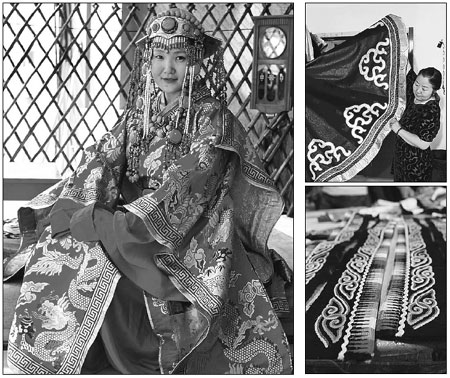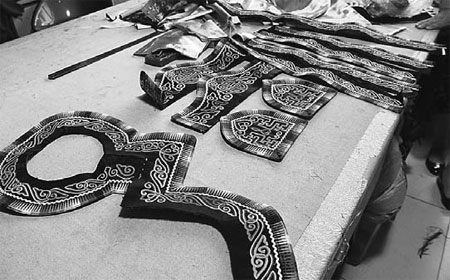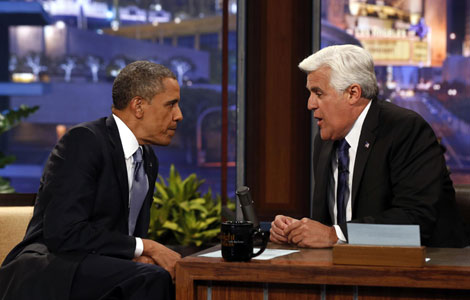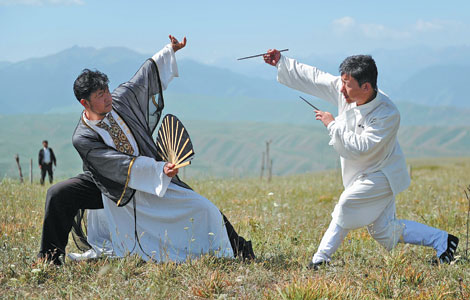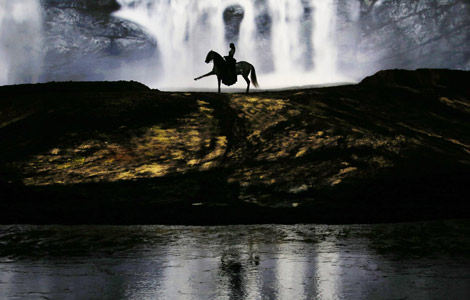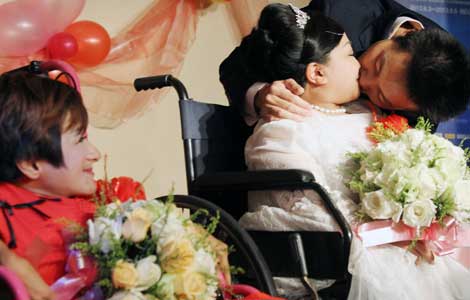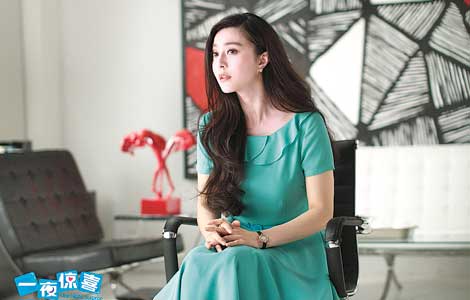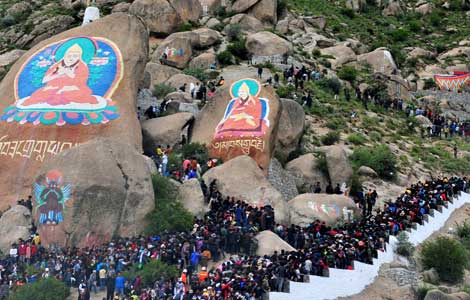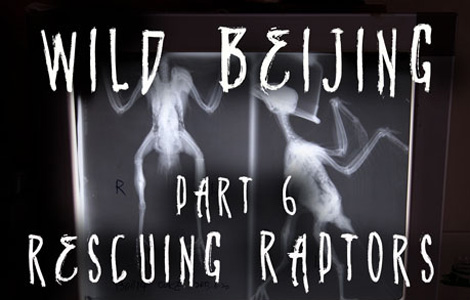Robe warriors
Updated: 2013-08-07 07:17
By Wang Kaihao and Yang Fang (China Daily)
|
||||||||
|
Clockwise from top: Wu Yunhua's eight-people workshop tries to preserve the culture of Mongolian attire. Traditional costumes of the Ujimqin tribe feature flamboyant colors. Erdenmonh's wedding dresses combine traditional and modern elements. Photos by Wang Kaihao / China Daily |
|
A delicate Ujimqin clothing may take months to complete. |
Renewed interest in traditional Mongolian dress has promoted designers to find ways to adapt it to modern wearers, Wang Kaihao and Yang Fang report from Xilinhot, Inner Mongolia.
Perhaps, this is a Mongolian-style Via Monte Napoleone: 30-odd costume shops gather in this downtown area in Xilinhot, capital of Xilin Gol League in the Inner Mongolia autonomous region.
The neighborhood is much less luxurious than that celebrated fashion street in Milan, but the costumes' unique ethnic characteristics make them almost impossible to copy anywhere else. The elegantly ornamented clothes attract camera-clicking visitors, too.
People of the Mongolian ethnic group are reincorporating their traditional attire back into their lives.
Wu Yunhua, 59, a local woman who ventured into the costume business in 1993, is the city's leading entrepreneur in the fashion industry.
According to Wu, summer clothes are ordered before each year's Spring Festival, and if customers do not order winter or next spring's clothes before May, they will have to wait another year. Major celebrations, weddings and nadaams (the traditional Mongolian sports games and festivals) are also peak seasons.
"I am not able to take half of the orders because we don't have that large amount of output," Wu smiles in the face of problems that come with success. Her workshop has a staff of eight.
"I don't want to expand the scale to compete with manufacturers in southern provinces," she says. "I don't think they can create the same flavor. How can costumes rooted in Mongolian culture be produced far away from this grassland?"
Xilin Gol is one key cultural center for the Mongolian ethnic group. It is the gathering point for four major ancient Mongolian tribes: Ujimqin, Abag, Sonid and Chahar. Costumes from each tribe have distinctive hat shapes and decorations, including edging styles on the front of robes and images on ribbons.
Traditional Ujimqin clothing boasts flamboyant colors and style. Three wide layers of garment edging distinguish it from the other three tribes', which favor slim trimmings. A twisted waistband for a robe can be 5 meters long.
The main part of each piece of clothing takes one week to finish, but the decorations usually take nearly two months. A piece of high-end Mongolian attire in Wu's studio sells for 5,000 to 6,000 yuan ($814-980), and the decorations made completely by hand cost nearly 4,000 yuan.
"As long as the traditional flavor is preserved and the clothes are exquisite enough, I do not care how much they cost or how much time I take making them," Wu says.
But it is rare to find modern ethnic Mongolian people wearing traditional clothes in the city streets of Inner Mongolia, although older folks living in pasturing areas still use them in daily life. Wu finds the reluctance of city people to wear traditional clothing embarrassing, and laments that it is not enough to rely on festivals to revitalize the historic garb.
Bao Zhimei, 35, is Wu's daughter. After graduating in 2003 from a fashion school where she studied Western-style clothing design, she joined her family's business to help redesign the style of clothing that has been passed down through generations.
"Most old-time Mongolian costumes are robes, which are inconvenient for urban life," Bao says. "That is why I try making short skirts or sleeveless blouses, for example, to better match what modern women like. Nevertheless, the key part of traditional costume, like the edging and decorations, are kept.
"People are more conscious about their identity with ethnic groups in recent years, with the revival of traditional culture," she continues.
"Many parents will buy a piece of Mongolian clothing for their children as gifts, before they go to college or go abroad."
About 70 percent of orders for their workshop now come from individuals, but performance costumes still play an important role in their business. The workshop even provides a ballroom to facilitate arts troupes choosing different costumes.
Some other local designers have even bigger outlooks on the resurrection of the history of this native dress.
Erdenmonh, 39, a designer, is the youngest among 20-odd "inheritors of Mongolian costume arts" titled by the cultural department of the autonomous region's government in 2006. Erdenmonh credits his strong passion for creativity to his choreographer mother. He is especially fascinated by the complicated Mongolian headwear pieces, and has spent years collecting different styles around Xilin Gol. He chooses more diverse ways to promote his combination of tradition and fashion.
"Presenting these marvelous pieces on the stage is as important as making them if we want them known by the world," he says.
Erdenmonh launched his first modeling troupe back in 1998 and has now hired 16 models, eight of whom are also costume makers, to appear on catwalks nationwide. In early July, he represented Inner Mongolia with his couture show in Hong Kong, and hopes to hit some international arenas.
"Xilin Gol is where the site of Xanadu is located," he says, adding that the inspirations in his latest show come from the Kublai Khan's summer palace built in the 13th century.
"So, I added some royal and mystic elements into my works."
The tall, slim hats plus intricately adorned sparkling robes matched with delicate headwear look ritualistic and solemn, which Erdenmonh imagines resemble a journey through time and space.
Erdenmonh now has other plans to expand his business.
"It's a waste to leave the first floor empty. I can change it into a photography studio and let this fashion be known by more people," he says, referring to the crowds of visitors to Xilin Gol during the summer. "But I need to find a top-level photographer to make fine posters immediately."
Contact the writers through
wangkaihao@chinadaily.com.cn.
(China Daily USA 08/07/2013 page10)
Most Viewed
Editor's Picks

|

|

|

|

|

|
Today's Top News
China vows to severely punish newborn traffickers
Sri Lanka suspends NZ milk powder imports
PV firms face risks despite EU deal
Small firms should also think global
China issues record fines for dairy firms
US, China trade deficit narrows
NBA courts Sina Corp
EC denies delay in telecoms probes
US Weekly

|

|
